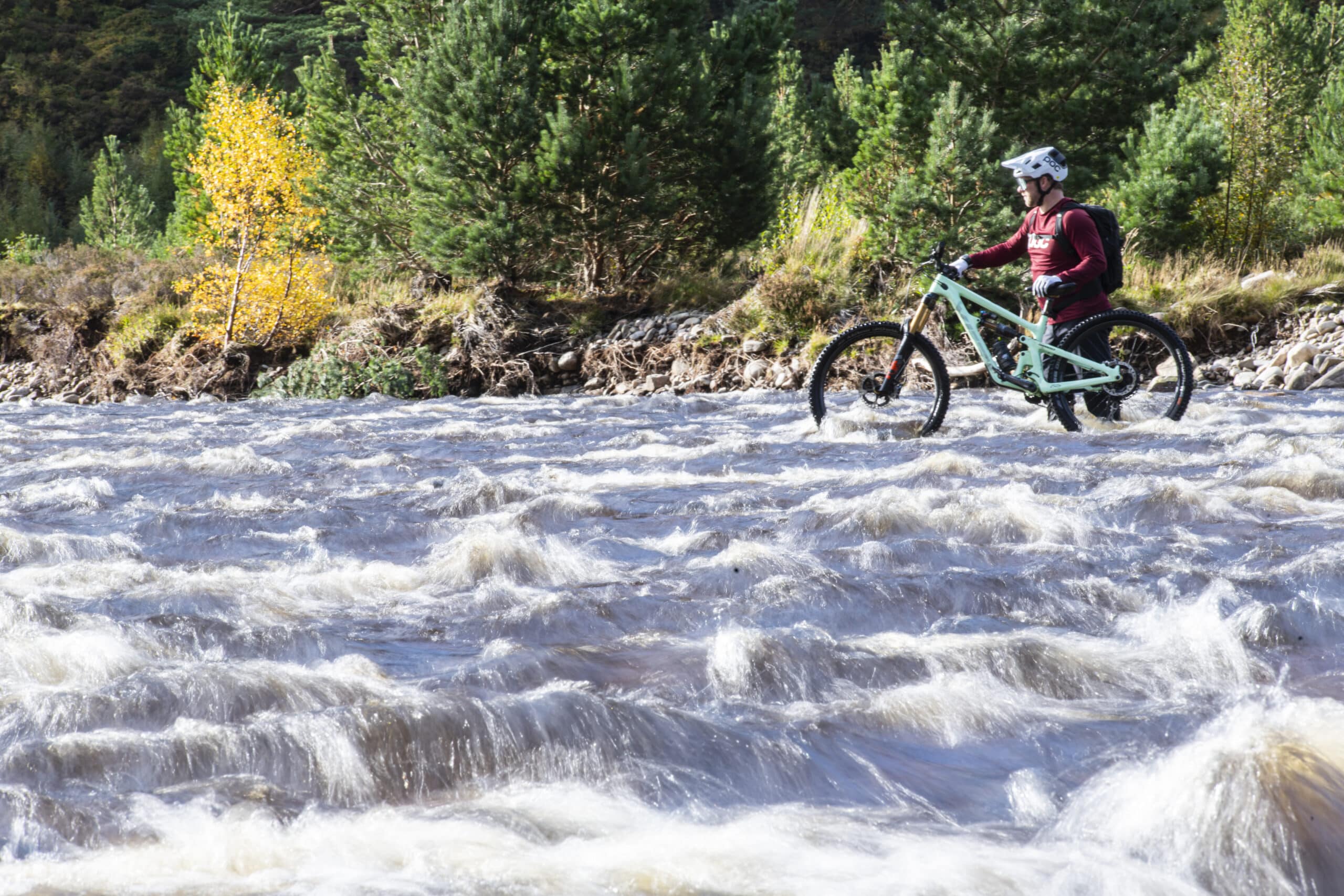Pete gets his feet wet in a search for that iconic Scottish image: the leaping salmon.

Words & Photography Pete Scullion
Returning from overseas to find most of Scotland underwater, including my home village of Aberfoyle, I wondered whether the falling waters would be the sign for the Atlantic Salmon to begin their run upstream. Every October since I moved back north of the border, I’ve made a point of watching this truly fascinating spectacle at the falls not far from my house. My previous landlord’s father, a farmer by trade, had told me that the salmon wait for heavy rain and the water levels to start to drop before running. With the water levels being at record highs, I thought now would be a good time to watch them run a little further afield.

Wondrous anadromous
Salmon in Scotland have been of great value to its inhabitants for centuries. Robert the Bruce himself passed laws to protect the young fish from being trapped in cruives, a weaved wicker dam for trapping fish, such was their importance. Anyone caught poaching salmon on royal lands twice could be punished by death. James III of Scotland would close mills that were known to kill fish. But, like the Eurasian beavers earlier in this series, Atlantic salmon haven’t had it all their own way. The usual culprits of habitat destruction – rising water temperatures, overfishing, and in the salmon’s case, sea lice and the other delights that come with farmed salmon – have hammered stocks of this amazing fish for years.
Latest Singletrack Merch
Buying and wearing our sustainable merch is another great way to support Singletrack
The Atlantic salmon, among its other salmon brethren, is one of the few species that are anadromous, meaning that they are born in freshwater, become adults in saltwater, and then return to freshwater to complete the cycle. Their very name, Salmo salar, meaning leaper salmon, is based on their leaping up rapids and falls in their birthing rivers and gives rise to the spectacle that I’ve travelled to the Cairngorms to enjoy.

I’d be meeting mountain bike guide extraordinaire Chris ‘The Bear’ Gibbs where the tarmac fizzles out in Glen Feshie to make our way to the pools high on one of the River Spey’s bigger tributaries. The added bonus of this is taking in the regenerating landscape that’s benefiting from the rewilding efforts going on here. Part of this regeneration includes removing any infrastructure put in to alter or manage the watercourse, but also extends to deer management, removal of non-native tree species, bog regeneration, seeding of high alpine flora… The works. Everything that goes into returning the land to what it would have looked like before the Industrial Revolution. This is part of the 200-year vision of the landowners, the Povlsens. In fact, my pal Ronan, a handy rider in his own right and Conservation Assistant at the outfit tasked with delivering this vision, was due to join us or meet us en route but was on the far side of this sprawling estate attending to reports of a group of stags that had made their way through the boundary fences. Removing deer from the estate has allowed saplings to thrive unmolested wherever the seeds may have fallen.
Washing away summer
As I roll up to the car park at the end of the road, Chris hands me a still-warm bacon sarnie. What a legend. It’s been a long old summer and I am cooked, but this puts a spring in my step that will help in the adventure that is to come. The sun is out but the clouds are whipping across the sky, so we’re thankful that we won’t be leaving the protection of Glen Feshie as the gale rips across the tops.
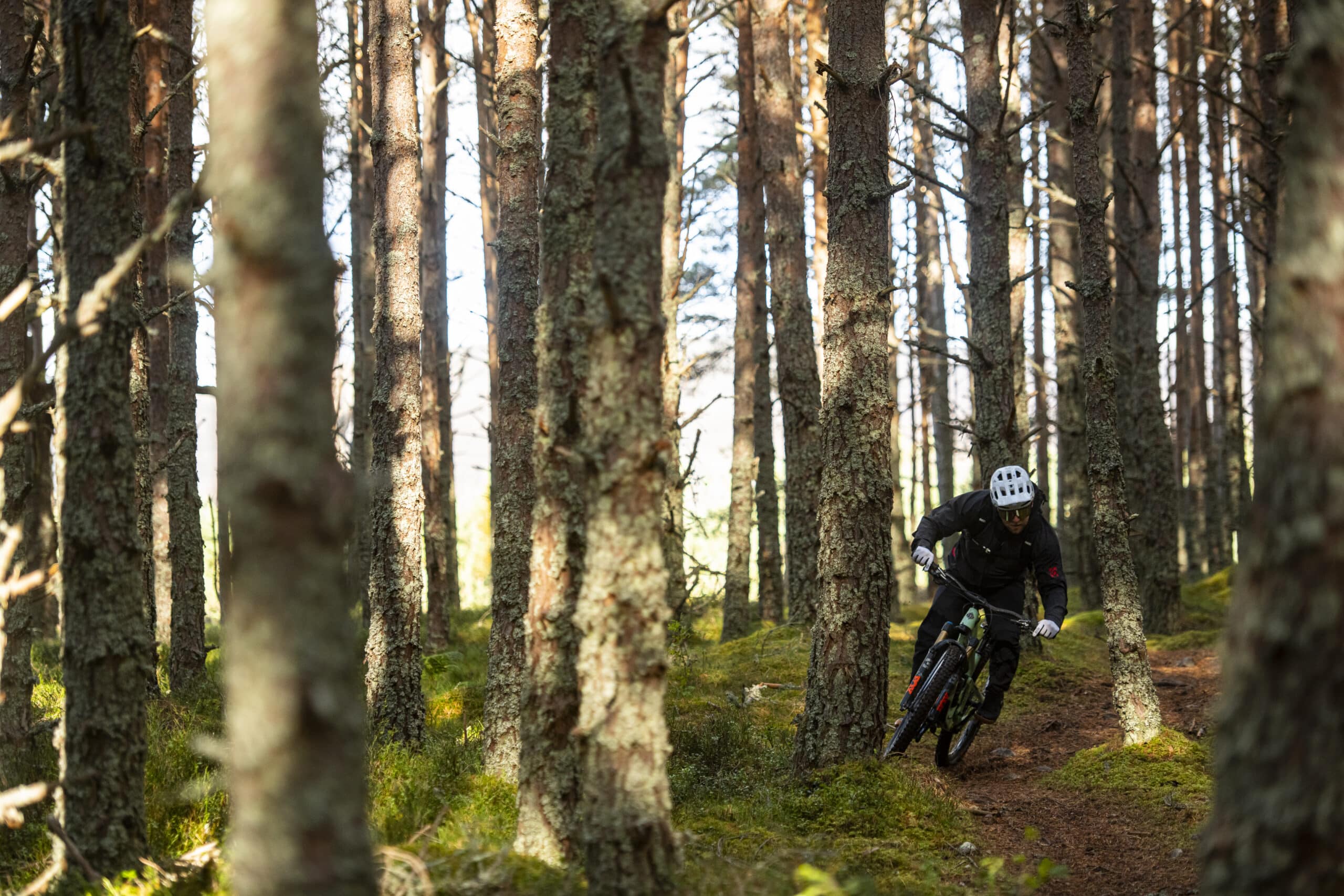
It’s the first morning that feels like the summer might be losing the fight against autumn, and the rowan and birch have already begun to shed some leaves. Despite the shortening days and falling temperatures, this is really one of the best times to enjoy any part of Scotland where pioneer species of tree are in abundance. Birch, rowan and hazel add a splash of warmer colours as this season’s leaves turn to yellow, orange and the full mix of in-betweens. The still high and bright sun only helps add to the feeling of this change in hue.
Our plan is to head to a spot high on the River Feshie where the pools are deep and waterfalls more abundant, a spot handpicked by Ronan before we’d even turned a wheel. He did add the caveat that salmon runs, in general, are hit-and-miss these days – with so much against the salmon, it’s easy to miss them entirely.
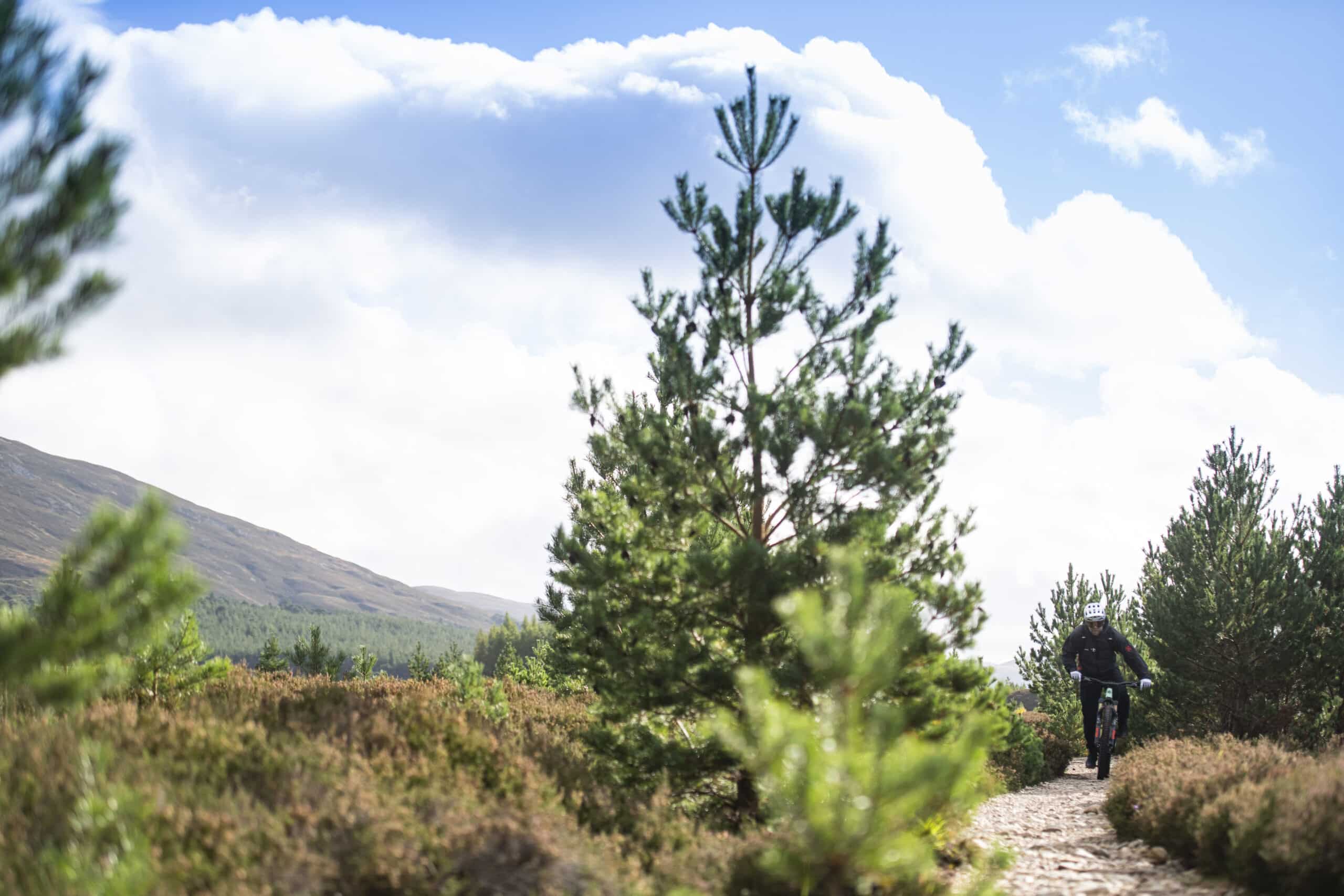
The opening miles are easy. A nice, well-built path leads us up the southern side of the Feshie, with the Scots pines beginning to poke their way through the heather, with the older granny pines already visible high in the glen. On the flanks of the glen, broadleaf trees catch the sun and immediately add a dash of colour to proceedings. It’s not long before we take in a river crossing. We knew this one would be coming… it’s unavoidable this one. Further along the path, the steps cut into the gulley that was washed away in previous floods have once again vanished. We head upstream to find the log bridge gone too. More wet feet, but we’re soon making good progress through the mature Scots pine forest as the sun breaks the cloud once more.
Swimming with the Land Rovers
Before long, the forest opens out and the broad glen is dominated by the ancient Scots pines that have seen many comings and goings over the decades and centuries. We pass Ruigh Aitcheachain bothy, continuing to where the Land Rover track should have been… As we try to locate which part of the river the track has been washed to, my rear mech takes the opportunity to detonate. Piss. Luckily, Chris is swiftly on the case, shortening my chain in the blink of an eye and allowing me to run singlespeed for the remainder of the ride.

With the Land Rover track somewhere between the Feshie and the North Sea, we pick up the singletrack that hugs the base of the hill as it still exists. For a short while the going is easy – this ribbon of singletrack rising and falling as it skirts the southern bank of the Feshie. We scale a short, punchy climb and Chris comes to a sudden halt… “Maybe not…”. I peer beyond him and see the hill ahead has slipped away, taking the path with it. Chris launches a rock across the gully to check for stability and a mass of rock and dirt slips away.

“Ford the river?”, we say almost simultaneously, as we retrace our steps, looking for a suitable spot to cross. The river here looks low but has plenty of power in it, and many of the larger rocks have been undercut during the previous week’s swell. Slow and steady wins the race. Thankfully, the flood waters have cleared a large area on the bank that we can ride along, making the most of our access rights. Here, Scots pine saplings make the most of the lack of deer and litter the river bank as their great-grandparents loom over them.
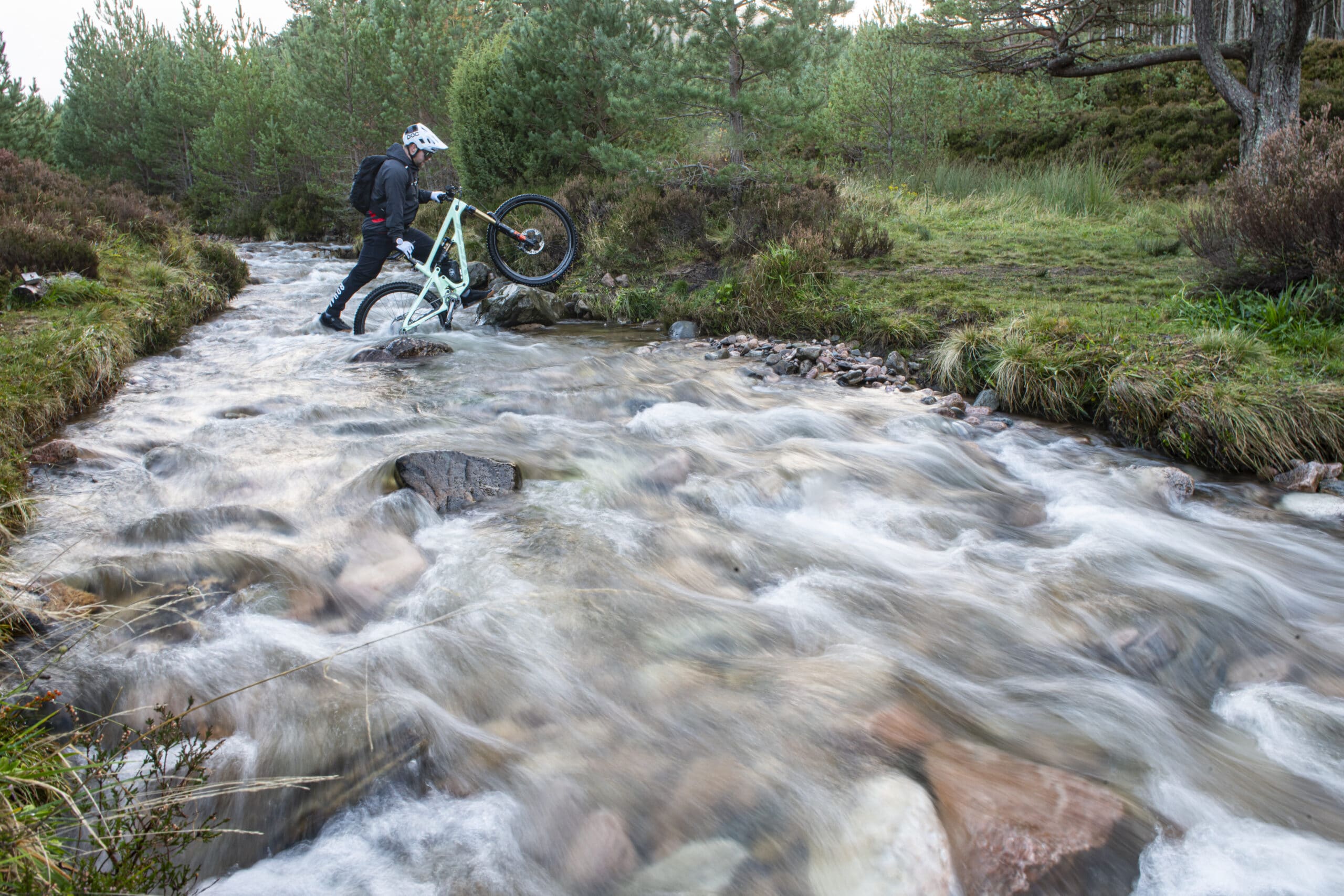
Recrossing the river a second time, I get a sinking feeling that we’ll see no fish today. The odds seem against us. Chris nods in agreement. We’d no doubt have seen something while crossing the river, now up to four times. The Land Rover track crosses the river many more times and we’re up to 11 crossings before we’re on the final stint to the river’s upper reaches.
We pick up a sliver of singletrack that leads to what was at some point a bridge over the river, but only the footings survive. Like the Land Rover track we tried to find previously, it’s likely in the North Sea by now. Here though, deep pools are punctuated by waterfalls as the river cut its way through the various layers of rock. As we huddle into the river bank, the wind changes to a northerly and the temperature plummets.
Our backs to the wind, we sit and wait for what we hope will be the first of many large fish sending themselves upstream. As time goes by and our core temperatures get to the point where we’re less inclined to stay put, it seems pretty obvious that the Salmo salar has evaded us at this point. It does pose the question, why?

Canned salmon (hunt)
Salmon should start to run at this time of year, after a heavy rain when the river levels start to drop. But they were nowhere to be seen. Nor were they visible on two other rivers I visited on the way home, rivers known for salmon runs. In this specific instance, it’s likely down to the rising water temperatures as the global temperatures rise. Salmon are very sensitive to water temperature levels, and warmer river water will keep them in the sea longer. This then closes the window for spawning too.
Beyond this, disease from salmon farming, faster-flowing rivers from the less frequent but heavier rains, and a falling genetic variation due to mating with farmed salmon all add up to fewer fish, even before you factor in overfishing and later salmon runs with reduced spawning time. The work done by the estate to restore river and riverbank environments will help the young fish, as they need deep, slow pools to spend their formative years in before they head into the sea. So hopefully, in the years to come, the stocks will be healthier, even if they have other things to combat before reaching adulthood.
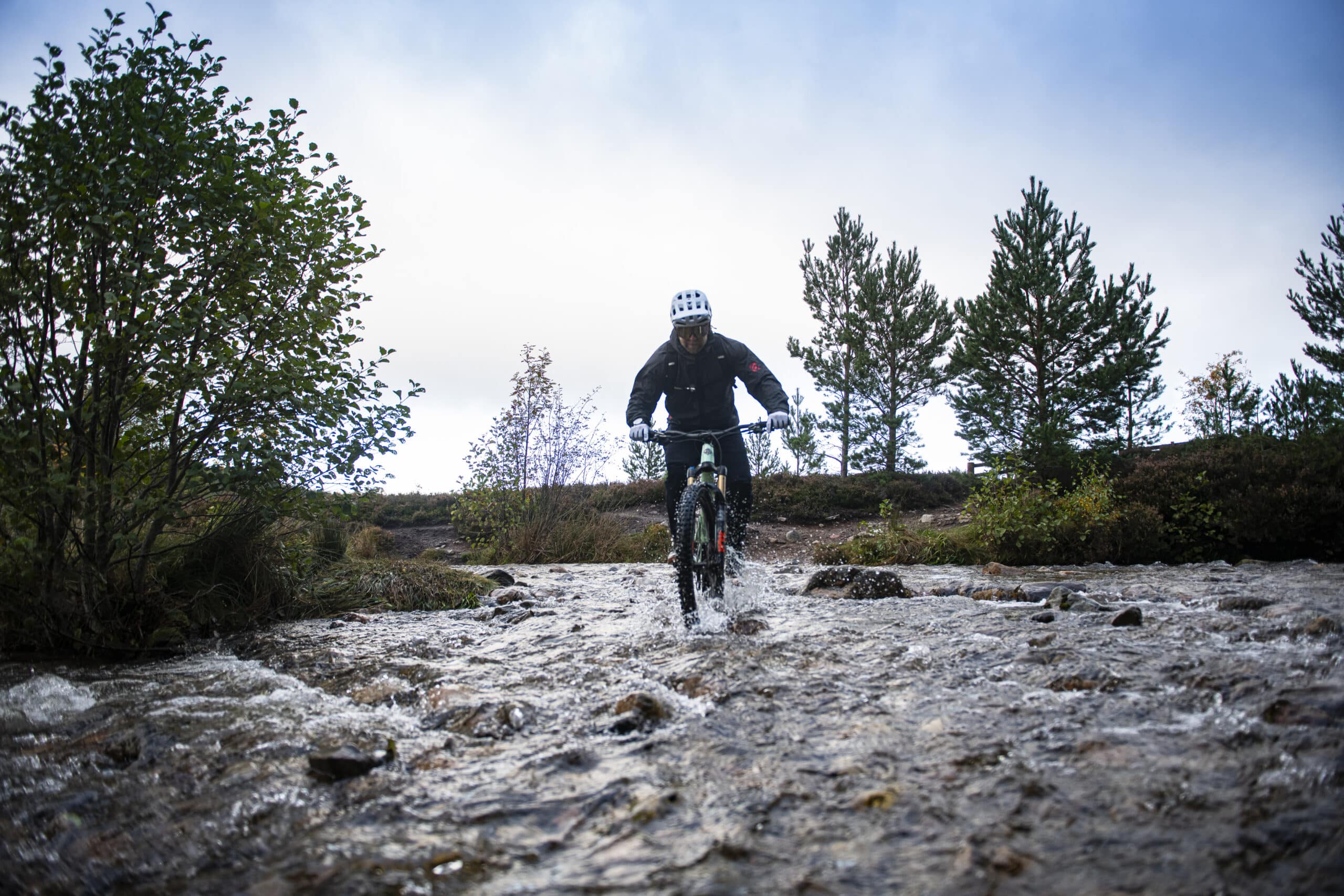
With this sombre thought swimming through our heads, we begin to retrace our steps, hacking through the heather-lined singletrack before battling the headwind to the first of what we know will be many more river crossings. We’ve not seen another human since our first stream crossing, and it feels like we’ve got the place to ourselves. This is not lost on either of us.
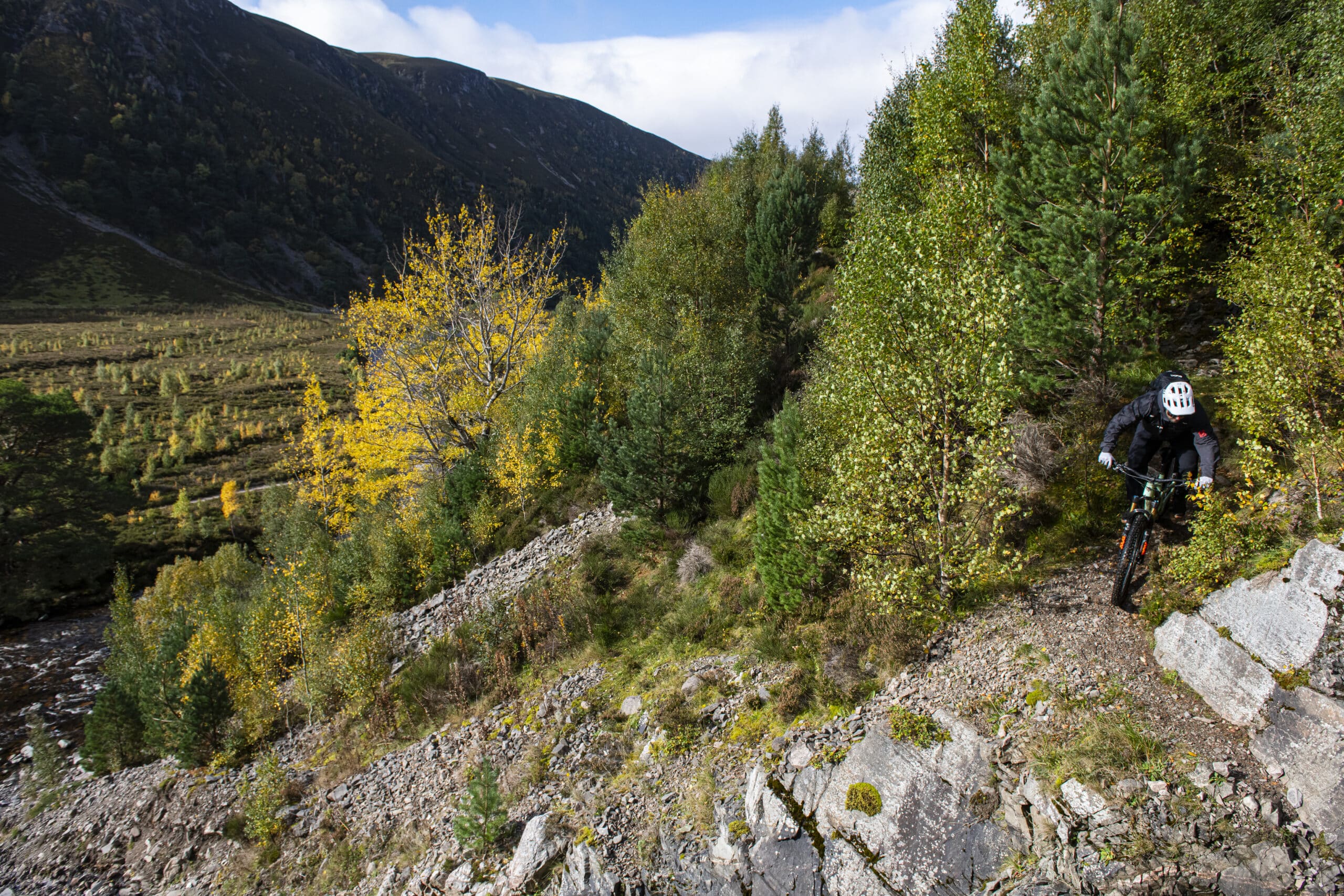

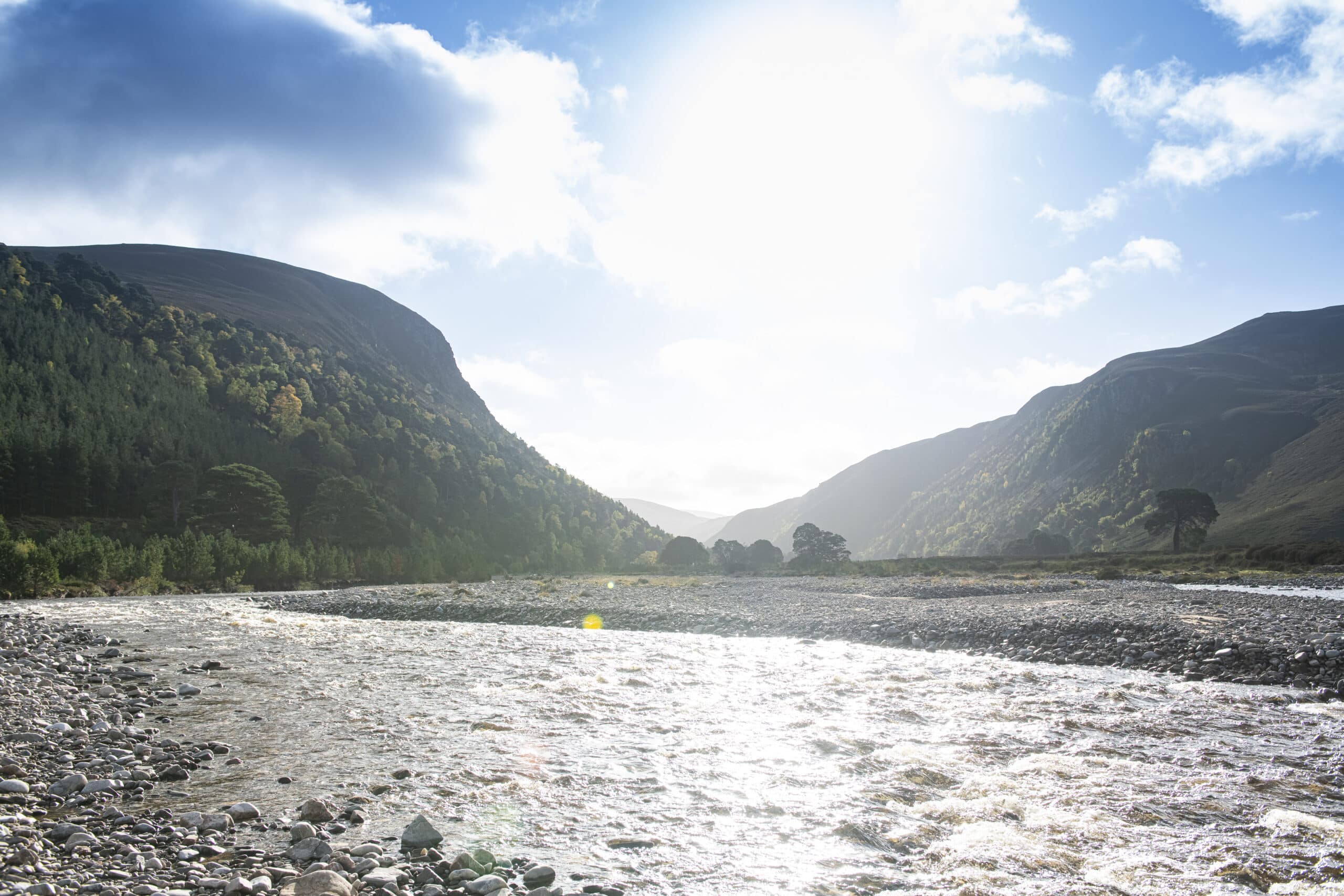
While the fish might have eluded us, we’ve found a Scottish Highland glen in all its autumnal glory, a glen that’s being well looked after by hands that wish to see it continue in this vein. I’m already planning a return in the spring to see the greenery pop, and again in August to watch the heather go full nuclear. Hopefully, by the time I head to my usual salmon haunt, the fish will be running riot. I’m hopeful that we simply were too early this time around.
What is a Purposeful Adventure?
What if our adventures not only sustained us and our connection to nature, but they actually contributed towards a positive impact on the places we visit?
That’s why Trash Free Trails encourage you to start a purposeful adventure and embark on hands-on action to preserve and enhance the environment that nurtures you. That doesn’t mean your adventure should shun your personal enjoyment.
Choose something that motivates and excites you, but think about how you can make a positive impact at the same time. Trash Free Trails will always suggest a trail clean, but it absolutely doesn’t have to be limited to that. A purposeful adventure can be anything you want it to be.
Who are the Trash Free Trails A-Team?
First up, they are riders, runners and roamers just like you. Second up, they are passionate about making a positive impact. They volunteer their time and effort – and more often than not go the extra mile – to represent their trails and the communities who love and use them.
They have pledged to donate their time, passion and talent to protect and promote their trails for everyone to enjoy and we couldn’t be more thankful.
If you’ve got an idea for a trail clean, would like some guidance or just want to find other TRASHMOB members in your area, take a look at the A-TEAM map on the Trash Free Trails website and get in touch with your local representative. They’ll love to have a natter.
Visit trashfreetrails.org
Mag Features
all the ARTICLES fROM
The Magazine →
